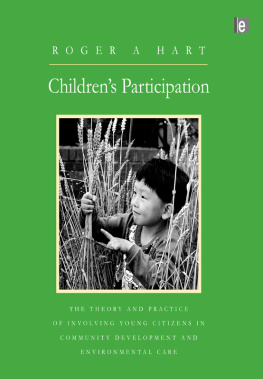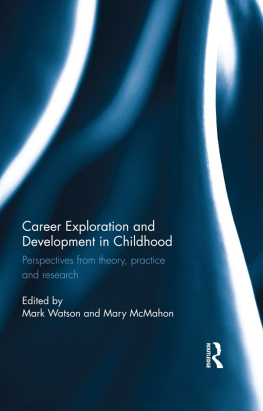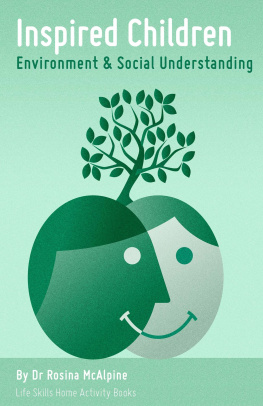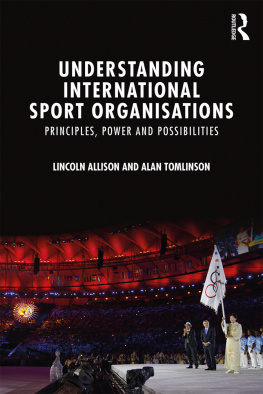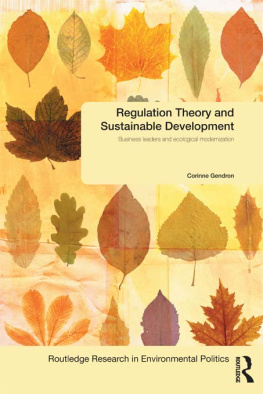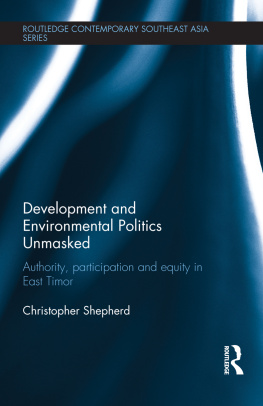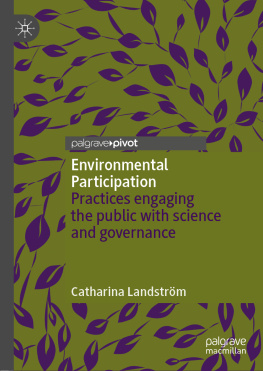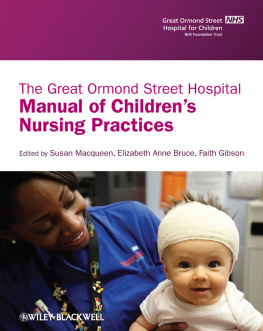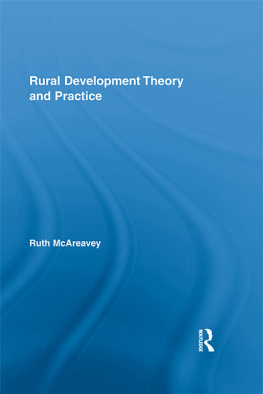CHILDRENS PARTICIPATION: The Theory and Practice of Involving Young Citizens in Community Development and Environmental Care
First published by Earthscan in the UK in 1997
reprinted 1999, 2007, 2008
Copyright UNICEF, New York, 1997
All rights reserved
A catalogue record for this book is available from the British Library
ISBN: 978-1-85383-322-9
Page design by S&W Design
Typeset by MapSet Ltd, Gateshead, UK
For comments or further information on this and other UNICEF concerns please contact:
Division of Communication
UNICEF
3 UN Plaza
New York, NY 10017 USA
Email: pubdoc@unicef.org
World Wide Web: http://www.unicef.org
Cover design by Andrew Corbett
Cover photo Robin Moore
For a full list of Earthscan publications please contact:
Earthscan
2 Park Sq uare, Milton Park, Abingdon, Oxfordshire 0X14 4RN
Simultaneously published in the USA and Canada by Earthscan
711 Third Avenue, New York, NY 10017
Earthscan is an imprint of the Taylor & Francis Group, an informa business
Earthscan publishes in association with the International Institute for Environment and Development
The material in this book has been commissioned by the United Nations Children's Fund (UNICEF).
The contents of this book are the responsibility of the authors and do not necessarily reflect the policies or the views of UNICEF.
This book was commissioned by two separate units of the United Nations Childrens Fund (UNICEF), the former Environment Section (now part of the Water, Environment and Sanitation Cluster) of UNICEF headquarters in New York and the Childrens Rights Section of the International Child Development Centre of UNICEF in Florence, Italy. It is an attempt to further the prospects for marriage of these two concerns of growing international importance: the environment, as now expressed by the international movement for sustainable development, and childrens rights, as reflected in the United Nations Convention on the Rights of the Child. It is designed to serve two audiences. For those who are concerned with sustainable development, but have not worked with children, it is an introduction to childrens participation and its effectiveness in community-based environmental planning and management; I hope it will be useful to both governmental and non-governmental agencies involved in environment and development work. For educators, community leaders and others who already understand childrens capacities but would like to know more practically about how to involve them in community development and environmental projects, it offers organizing principles and methods.
For a number of reasons, this is not designed as a cookbook style manual; participation must be a dynamic constructive process, with the score being built, like jazz, as a programme proceeds. Furthermore, this book is intended to be of use in different cultures. There is no universal model of how children should participate in society. I recognise this problem by including examples of childrens participation from a diversity of cultures and social classes. Extracting from these, it has been possible to identify some useful principles about the processes that have worked for different groups and a range of techniques that have been found to be effective.
The book focuses on childhood and early adolescence, to about fourteen years of age, rather than upon the older teenage years, even though the Convention on the Rights of the Child (CRC) defines the child as any person under 18 years of age. Most children in the world have either formally or informally entered the workforce by 15 years of age and are intellectually able to understand environmental issues on a par with adults. For them, many of the existing guidelines for involving adults in environmental and community projects are relevant. In contrast, this book is particularly concerned with the special developmental issues to consider when involving children and adolescents. Nevertheless, many of those who work with older teenagers might also find it useful, for I certainly found many valuable ideas from programmes with these age groups.
This publication concentrates on the conceptual issues, processes and methods for authentically involving children in research, planning, design, management and monitoring of the environment. While many case studies are provided, there is no attempt to be comprehensive in describing all of the specific kinds of direct actions children can carry out to improve the environment. There are hundreds of publications on how children can recycle, garden, build solar ovens, be selective in their shopping behaviour and so on. Instead this book looks more critically at the processes of working with children so that we can engage them in more genuinely participatory ways.
Inevitably, the book reflects the biases of an English author living in the United States, but it draws equally from examples from the Southern Hemisphere, particularly South America. Childrens community participation seems to be developing more in some of the emerging democracies than in the self-proclaimed well-established democracies of the North. More important than any North-South differences, though, are the great contrasts within all countries between those who do and those who do not recognize the capacities and desires of children to play a meaningful role in the development of their communities and in the care of the environment.
My thinking on childrens participation began with Robin Moore in 1979. Together with a small team of graduate students and high school students we produced a series of newsletters on childrens participation for the International Year of the Child. Some time later, Mary Racelis, then responsible for Womens Development and Community Participation at UNICEF, saw the potential of childrens participation in community development and asked me to visit Sri Lanka and Colombia, South America, where there were some interesting initiatives. But it was the Convention on the Rights of the Child, with its visionary articles on childrens participation, which provided the context for the commissioning of a book on the subject. Following my consultations with organizations for poor and working children in Kenya, India, the Philippines and Brazil, for the UNICEF International Child Development Centre (ICDC) the director of the Urban Child Program, Cristina Blanc, concluded that a handbook of methods for childrens participation should be produced. This fit well with the Child Rights initiative of the Director of ICDC, Jim Himes. An international survey of childrens participation projects was launched in collaboration with Malfrid Flekkoy of Norway, who was then a visiting scholar at ICDC. The task of producing a handbook on childrens participation was enormous, but Deepak Bajracharya, Chief of the recently formed Environment Section of UNICEF, suggested that it might usefully focus on environmental projects. The writing was carried out with the close support of the Environment Section of the New York Headquarters of UNICEF and with much encouragement from other UNICEF intersectoral sections: Social Mobilization and Communication, Urban, Children in Especially Difficult Circumstances, Development Education, and the NGO Liaison Office.
Three people were so helpful in preparing sections of this book that I have listed them as contributing authors. Maria Fernanda Espinosa, ecologist, social scientist and poet, helped a great deal with many sections, and was my support throughout the long process. She also offered her personal accounts of the Program of Working Children in Ecuador where she had worked as an environmental advisor. The second contributing author is Selim Iltus, Co-Director of the Childrens Environments Research Group. Selim is an architect and environmental psychologist with multiple talents. It is not possible to think of any of my own work in New York separately from him. Ray Lorenzo, a planner from Perugia, Italy has been a friend and colleague for 20 years and has worked continuously with children in environmental projects for all of this time. I was fortunate to have his help in writing sections on childrens futures and collage-making by children, as well as his fascinating case studies of work with WWF in the south of Italy. Special thanks also go to Jeff Bishop, expert on community participation in the United Kingdom, who should have been a co-author had funds allowed it.

